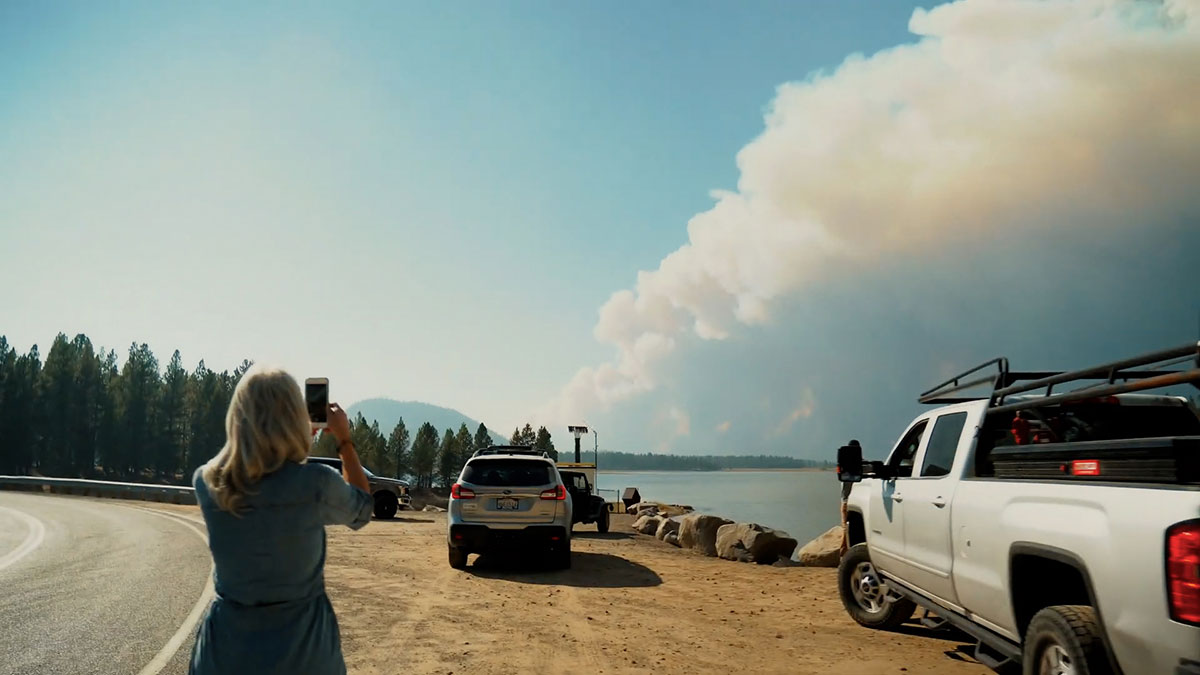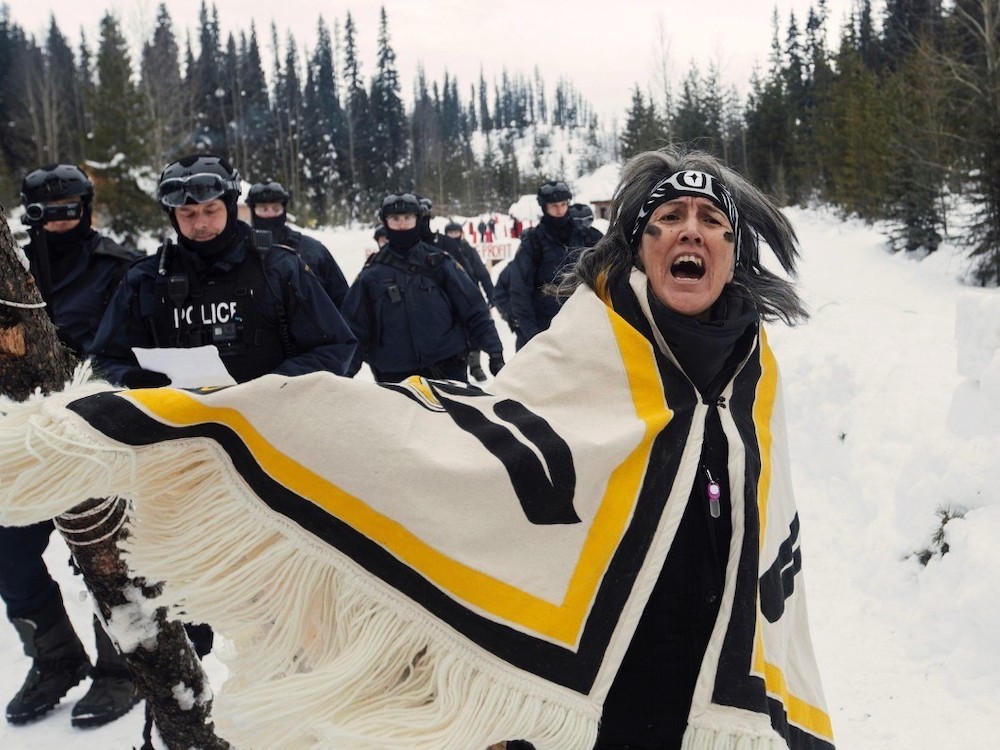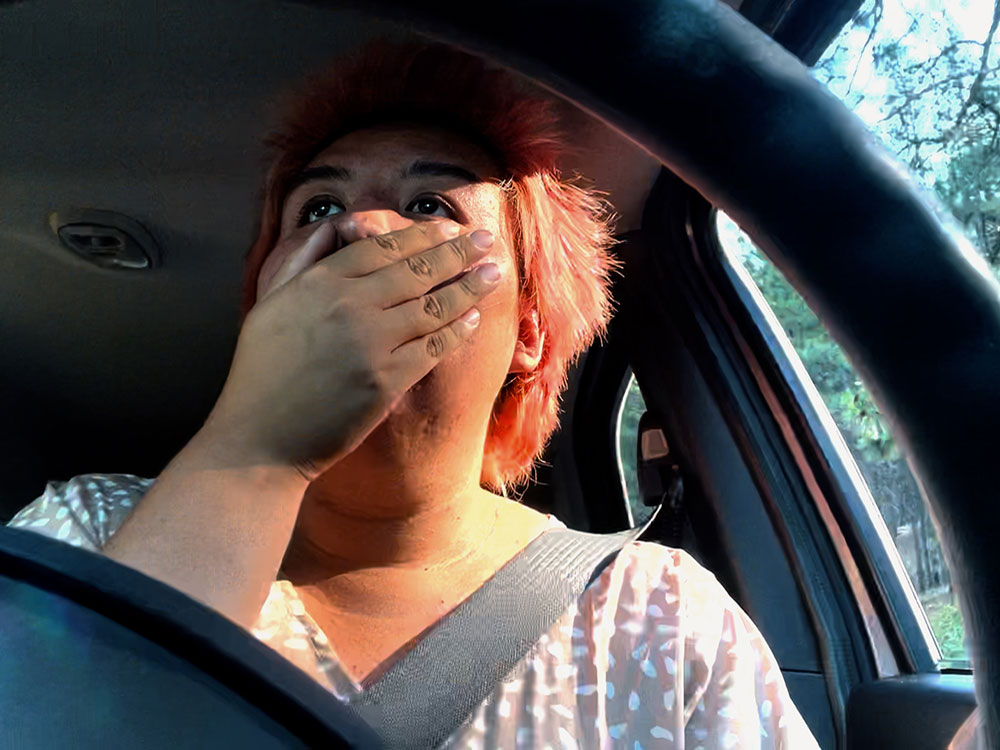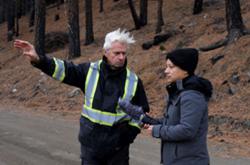There are a lot of documentaries headed your way. In Toronto, the much discussed yet embattled Hot Docs documentary festival is underway. In Vancouver, DOXA Documentary Film Festival revved its engines for its opening last night.
But all is not well in the world of documentary film.
The last few weeks have seen difficult days at Hot Docs. In addition to a mass exodus of Hot Docs staff, the festival also experienced the departure of its new director of programming and the resignation of two board members. All of this on top of a very public plea for money from the organization’s president.
A flurry of articles and analysis unpacked the issue, but things are not looking great. If you’re reading this and thinking, “Hey, someone should make a documentary about this!” you’re not wrong.
The problems go beyond just Canada. In the United Kingdom, filmmakers have decried the collapse of the industry. Participant, the production company that launched some of the most impactful documentaries of the past two decades (An Inconvenient Truth; Food, Inc.), closed up shop this month.
If ever there was a moment that clear-eyed, bold and brave filmmaking was needed, it’s right now. The world gets darker and more intense every second, and nothing can explicate the complexities of our time like a great documentary. Struggling as they are through funding instability, attendance and the ongoing challenge of making art, film festivals, independent filmmakers and production companies are critically important. They offer some of the most honest assessments of the state of the world. They don’t call it cinéma-vérité for nothing!
There is a great deal of fighting spirit on offer in the best documentaries of the year. If you’re in Toronto, you can take in Hot Docs until May 5 and online later in the summer. DOXA opened last night and runs until May 12 at various venues around Vancouver.
Whether you’re a dogged member of the documentary community or a curious filmgoer in search of inspiration, these films offer cogent, thoughtful analysis of the direst stuff facing us humans: everything from microplastics to food security. Even more importantly, they offer film art, rugged, flinty, astounding old art.

The Here Now Project
No film is more direct in its collective implications than The Here Now Project.
Composed of more than 200 pieces of footage of extreme weather and climate catastrophes from around the globe, the film is a portrait of what we are facing as climate instability wreaks havoc on planetary systems, from ocean warming to forest fires. “Biblical” might be the best descriptor, especially when hordes of locusts descend on sub-Saharan African countries, eating as much in a single day as many thousands of people.
Riveting as it is, some of this footage isn’t unfamiliar. Similar scenes have unfolded in the daily news cycle for years now, but there is something about the collected aspect of all these experiences that hammers home both the scale and the on-the-ground reality of the situation.
In 2021, the number of severe climate events that took place ranged from hot to cold, wet to dry. The film begins with the unprecedented February cold snap in Texas that upended the power grid and brought the state to a frozen standstill. More than 200 people died as a result of the weather, as the infrastructure essentially crumpled under the weight of the demand.
No matter the location or the severity of the experience, the response to immediately document is interesting — as if we humans can better, or perhaps only, understand something through the lens of technology.
Although, in more than a few instances, I wanted to scream at people: “Quit filming. Get the hell out of there!”
In Siberia, a dishevelled and blackened firefighter explains that he can feel the fire at his back. Even as he is facing the camera, explaining what is happening, the wall of flames behind him is consuming everything in sight.
With no interpolation or talking-head experts interjecting ideas or commentary, there is only the footage itself, taken on cellphones or other devices. It’s shaky, unpolished and mesmerizing, often mere steps from total disaster, and very much on the frontlines.
The film follows people in Siberia forced to battle the largest wildfire on the planet with little more than portable backpacks. It also strikes close to home, when the Interior of British Columbia experiences both the hottest and the wettest extreme weather events in recorded history within months of each other.
Filmmakers Greg Jacobs and Jon Siskel employed a similar approach for their Emmy Award-winning film 102 Minutes That Changed America. Of all the films about 9/11, 102 Minutes remains one of the most impactful. I remember watching it with my hand over my mouth, a reaction of horror and humanity, such was the curious combination of world events captured from intimate and individual angles.
Without the greater context of history sorting, assembling and assigning meaning, chaos and confusion reigned. So it is in The Here Now Project.
Sometimes it feels like a miracle that people survive. Sometimes they don’t. The fire in Lytton, B.C., is a case in point — a historic wildfire during a heat wave in June 2021 killed two people and destroyed the town. The Here Now Project follows a young Lytton woman as she packs up her car and talks about how the smoke has aggravated her asthma, yet maintains that the authorities would surely alert people in case of an evacuation. But as she drives through town, a sob of sheer unfiltered shock escapes her lips as the full scale of destruction is revealed.
As the filmmakers’ statement makes clear, The Here Now Project’s structure was made in direct opposition to most conventional social-impact documentaries. The intent was to pierce the nullifying sense of habituation that seeing a familiar narrative engenders.
“Our goal is to convey the urgency of climate change in a way that can reach audiences numb to what the New York Times’ Amanda Hess called ‘the anesthetizing stream of global warming content itself,’” the filmmakers said.
The greater takeaway from the film is that we are all in this together, and no one will escape planetary breakdown. Climate scientist Simon Donner’s closing quote sums it up: “Addressing climate change is not about optimism or pessimism.... It is about courage.”

Yintah
At the political level, courage appears to be in short supply, but within ordinary people it radiates forth as clear and compelling as a pealing bell. No film makes this more apparent than Yintah. In a Tyee interview about the project, the filmmakers are resolute about the critical importance of capturing the story.
As women, young men and Elders face a phalanx of RCMP in full riot gear with snipers and attack dogs at the ready, the inequity of the fight is captured in all its astounding immediacy. The full power of the state is marshalled against the Wet’suwet’en, who stand down a massive corporate project with little more than collective will and raw courage.
One thing that is most striking about the film is how language becomes another weapon in the arsenal of the dominant power. Here it’s all about soft-pedalling what is actually taking place. As clean-cut cops and corporate functionaries bear gifts of bottled water and cigarettes to the local First Nations, they present the necessity of the Coastal GasLink pipeline project with words borrowed from reconciliation processes. These scenes are beyond creepy and grotesque.
The Canadian model of facile politeness, gentle words and hidden purpose is somehow worse than blunt violence. It’s also a pack of lies. All this faux softness falls away as the authorities close in, manhandling and wrestling people to the frozen ground.
As the Wet’suwet’en women chant and sing and the cops close in, it’s impossible to not feel incandescent with rage. The fight for the future of the earth could not be more dramatically captured. Nothing else matters.
There’s an amazing number of films on offer at both DOXA and Hot Docs. And here are only a scant few other options. If you have the time and resources, take in as much as you can. Go forth armed with truth and art.
Adrianne & the Castle
When Alan St-George was a teenager, a chance sighting from a bus changed his life forever. The path of St-George’s life took a swerve with the fleeting glimpse of a young woman named Adrianne. As the French say, amour fou. In other words, crazy love ensued. The film documents the couple’s relationship that manifested into a fully rendered castle in the middle of rural Illinois.
Havencrest Castle was the project of a lifetime. As St-George recounts for the camera, he and his wife set about making their fantasy life into a real place, filled with rococo everything, statuary, sexy frescoes, velvet, silk and soft-focus lighting.
After Adrianne died in 2006, Havencrest became a symbol of grief and love. And something else. Obsession seems too faint a word. There is something positively Dickensian (think Havisham) about the story.
Director Shannon Walsh takes a fantastical approach, re-enacting seminal moments from the couple’s past and hiring actors to play the role of Adrianne and her adoring husband. A few lingering questions are left unanswered in the suffused softness of the narrative, but if you suspend all rationality and let the sheer volume of crepe de Chine and enormous hairdos wash over you, there are considerable pleasures to be had.
Plastic People
Save this film for when you’re feeling a bit more resilient because it’s so hard to hold out a lot of hope for humanity when the full scope and impact of microplastics are revealed. They are present in snowflakes, in the open ocean and deep within the human body. Tiny fragments of plastic have even broached the blood-brain barrier. They are in the air we breathe, the water we drink and the food we eat.
But it’s the impact on generations yet unborn where the biggest problems might arise.
Tea Creek
Director Ryan Dickie’s film follows the fortunes of Tea Creek, an Indigenous food sovereignty centre located in Kitwanga, a community between Terrace and Smithers, B.C.
As gentle and resolute as its central figure, the film posits a ground-up approach to changing things. Jacob Beaton took on the task of transforming the farm into a training centre focused on providing training to Indigenous people, reviving ancient bodies of knowledge. As Jacob hustles for funding, the seasons pass, with vegetables and the people tending them growing together.
No one is more impacted or emblematic of what care, attention and support can do than a young man named Justice Moore. Struggling to stay sober, Moore credits the unique nature of Tea Creek with instilling in him a sense of pride and purpose.
An ambassador for the farm’s approach, Moore takes kids and teenagers on tours of the gardens, explaining the philosophy of Tea Creek, readying the next generation to dig deep.
A Man Imagined
One of my most memorable DOXA moments from the past came from the filmmaking team of Brian M. Cassidy and Melanie Shatzky. Their 2011 film The Patron Saints, a bracing look at daily life in an assisted-living facility, caused an entire audience to break out in mad, desperate laughter as a means of combating the near-obliterating bleakness.
A Man Imagined is similarly uncompromising in its depiction of an unhoused schizophrenic man named Lloyd. As the seasons pass, Lloyd sells stuff on the streets, like a child’s toy horse and an abandoned coffee machine, trying to make enough money to survive and support his addiction.
There are moments of strange, kinetic beauty as the filmmakers and their subject wander the streets and take refuge in the natural world, where the green gentleness of plants and animals offers moments of sanctuary and respite. The film gifts its central figure a degree of healing dignity and respect that resonates like a balm.
It’s tempting to look for connective tissue when watching a lot of films. A bigger-picture, über-narrative that unites us all. The ultimate takeaway, for me, at least, is that we humans need to get it together, stop fussing and feuding about trivialities and unite in a new way.
Whether this will actually happen, I’m not sure. But the scale and multiplicity of the problems we face can only be addressed in the collective. Solidarity is what we need, now and as we head into the unknown future. ![]()

















Tyee Commenting Guidelines
Comments that violate guidelines risk being deleted, and violations may result in a temporary or permanent user ban. Maintain the spirit of good conversation to stay in the discussion and be patient with moderators. Comments are reviewed regularly but not in real time.
Do:
Do not: